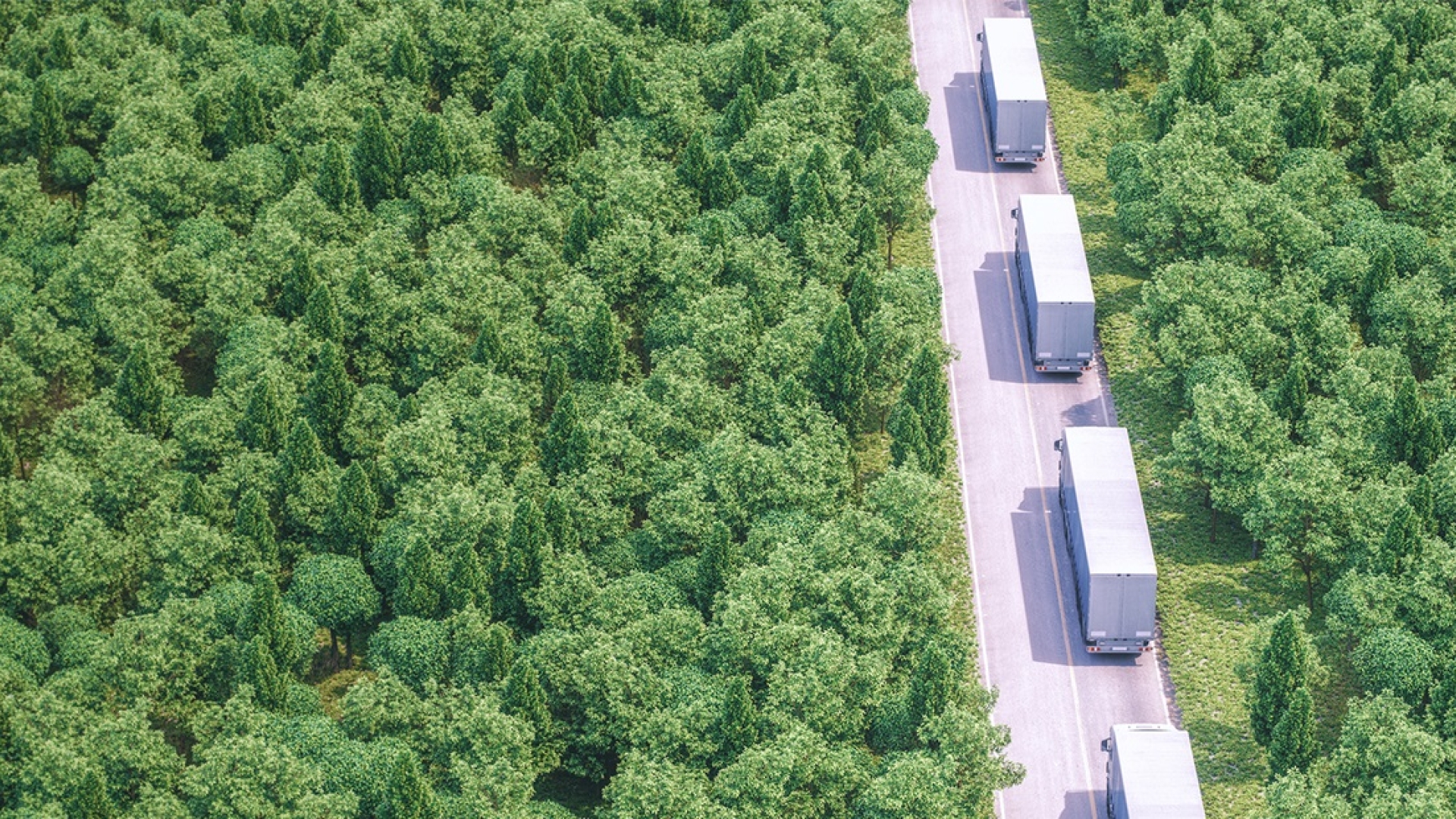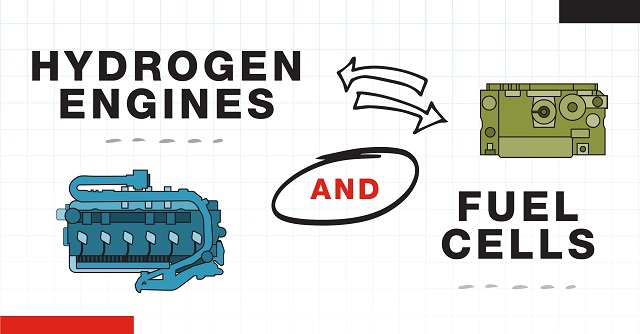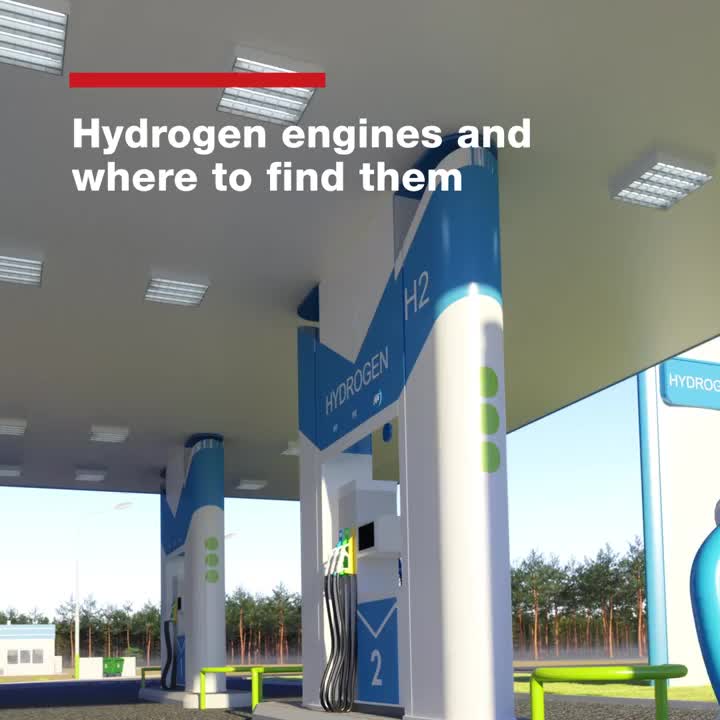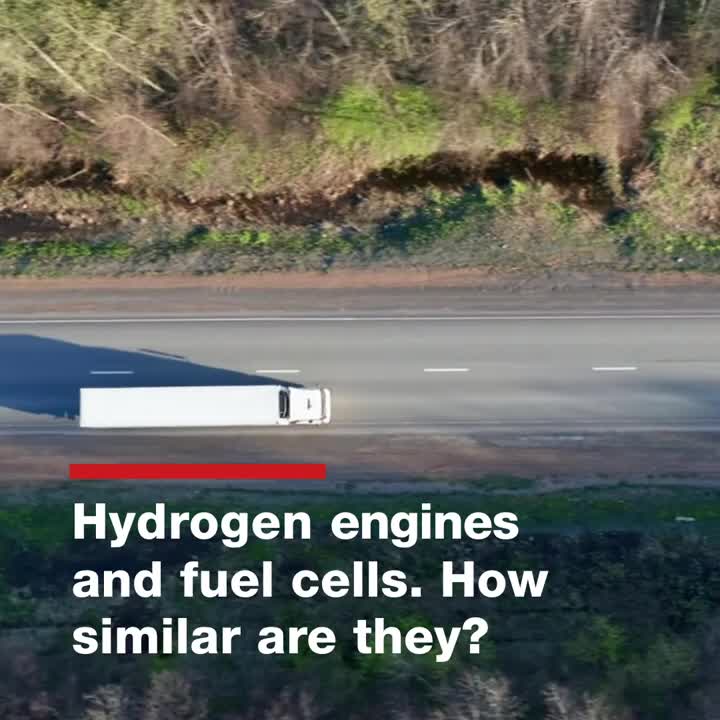Hydrogen internal combustion engines and hydrogen fuel cells
By Jim Nebergall, General Manager of the Hydrogen Engine Business

Regulations limiting greenhouse gas emissions (GHGs) from motor vehicles are tightening around the world. With this, both hydrogen engines and hydrogen fuel cells are receiving an increasing interest.
Given medium and heavy-duty trucks are a major source of CO2 emissions, the transportation sector’s journey to destination zero features both technologies.
As more truck makers join the ranks of auto companies developing CO2-free or CO2-neutral alternative to gasoline and diesel vehicles, let’s look at the similarities and differences between hydrogen engines and fuel cells.
Click on the 'blue' spots on this interactive to learn more about internal combustion engines and fuel cell engines.
Hydrogen engines and fuel cells: Similarities and differences in how they work?
Both hydrogen internal combustion engines and hydrogen fuel cells can power vehicles using hydrogen, a zero-carbon fuel.
Hydrogen engines burn hydrogen in an internal combustion engine, in just the same way gasoline is used in an engine. Hydrogen internal combustion engines (Hydrogen ICE) are nearly identical to traditional spark-ignition engines. You can read more about how hydrogen engines work if interested.
Fuel cell hydrogen vehicles (FCEVs) generate electricity from hydrogen in a device known as a fuel cell, and use that electricity in an electric motor much like an electric vehicle.
Hydrogen engines and fuel cells: Complementary use-cases
Hydrogen engines and hydrogen fuel cells offer complementary use cases.
Internal combustion engines tend to be most efficient under high load—which is to say, when they work harder. FCEVs, in contrast, are most efficient at lower loads. You can read more examples of hydrogen engines in mobility and transportation. These range from heavy-duty trucking to construction.
So, for heavy trucks that tend to spend most of their time hauling the biggest load they can pull, internal combustion engines are usually the ideal and efficient choice. On the other hand, vehicles that frequently operate without any load-tow trucks or concrete mixer trucks, for example, may be more efficient with a fuel cell. Fuel cell electric vehicles can also capture energy through regenerative braking in very transient duty cycles, improving their overall efficiency.
Hydrogen engines can also operate as standalone powertrain solutions and handle transient response demand without the need for a battery pack. Fuel cells combined with battery packs can also accomplish the same.

Hydrogen engines and fuel cells: Similarities in emissions
Hydrogen engines and hydrogen fuel cells also have similar emissions profiles.
FCEVs, actually, produce no emissions at all besides water vapor. This is a very attractive feature for vehicles operating in closed spaces or spaces with limited ventilation.
Hydrogen engines release near zero, trace amounts of CO2 (from ambient air and lubrication oil), but can produce nitrogen oxides, or NOx. As a result, they are not ideal for indoor use and require exhaust aftertreatments to reduce NOx emissions.
Hydrogen engines and fuel cells: Hydrogen fuel considerations
Yes, both hydrogen engines and fuel cells use hydrogen fuel; but there is more to this story.
Hydrogen engines often are able to operate with lower grade hydrogen. This becomes handy for specific use cases. For example, you might have a site where hydrogen can be produced on site using steam methane reforming and carbon capture and storing (CCS). This hydrogen then can be used in hydrogen engines without the need for purification.
The hydrogen engine’s robustness to impurities is also handy for a transportation industry where the transition to high quality green hydrogen will take time.
Hydrogen engines and fuel cells: Varying maturity levels
Finally, hydrogen engines and hydrogen fuel cell technologies have different levels of maturity.
Internal combustion engines have been universally used for decades and are supported by extensive service networks. Rugged engines that can operate in dusty environments or that can be subjected to heavy vibrations are available in all sizes and configurations.

From the perspective of vehicle manufacturers and fleet operators, the switch to hydrogen engine drivetrains involves familiar parts and technology. Risk-averse end-users will find comfort in the tried-and-tested, reliable nature of internal combustion engines.
So it is not really the case that FCEVs and hydrogen ICEs are competing with one another. On the contrary, the development of one supports that of the other, since both drive the development of a common hydrogen production, transportation, and distribution infrastructure. Both also involve the same vehicle storage tanks. They are complementary technologies that are part of reducing vehicle and transportation emissions towards destination zero, now.

Never miss the latest and stay ahead. Sign-up below to receive the latest in technologies, products, industry news, and more.
Author Profiles

Jim Nebergall, General Manager of the Hydrogen Engine Business
Jim Nebergall is General Manager of the Hydrogen Engine Business at Cummins Inc. and leads the company's global efforts in commercializing hydrogen-fueled internal combustion engines. Hydrogen internal combustion engines are an important technology in the company's accelerated path to decarbonization. Jim joined Cummins in 2002 and has held numerous leadership roles across the company. Most recently, Jim was the Director of Product Strategy and Management for the North American on-highway engine business. Jim is passionate about innovation and has dedicated his Cummins career to advancing technology that improves the environment. He pushed the boundaries of customer-focused innovation to position Cummins as the leading powertrain supplier of choice, managing a portfolio ranging from advanced diesel and natural gas to hybrid powertrains. Jim graduated from Purdue University with a bachelor's degree in electrical and computer engineering. In 2007, he completed his Master of Business Administration degree from Indiana University.
Temas relacionados
Related Tags